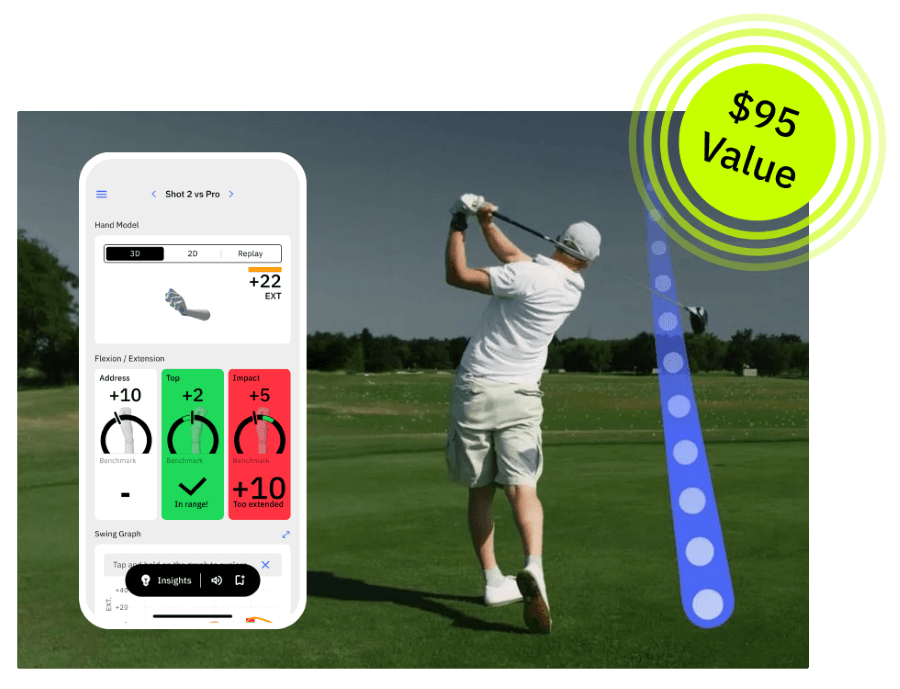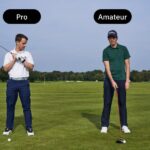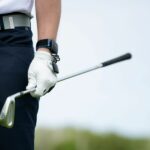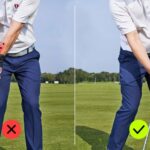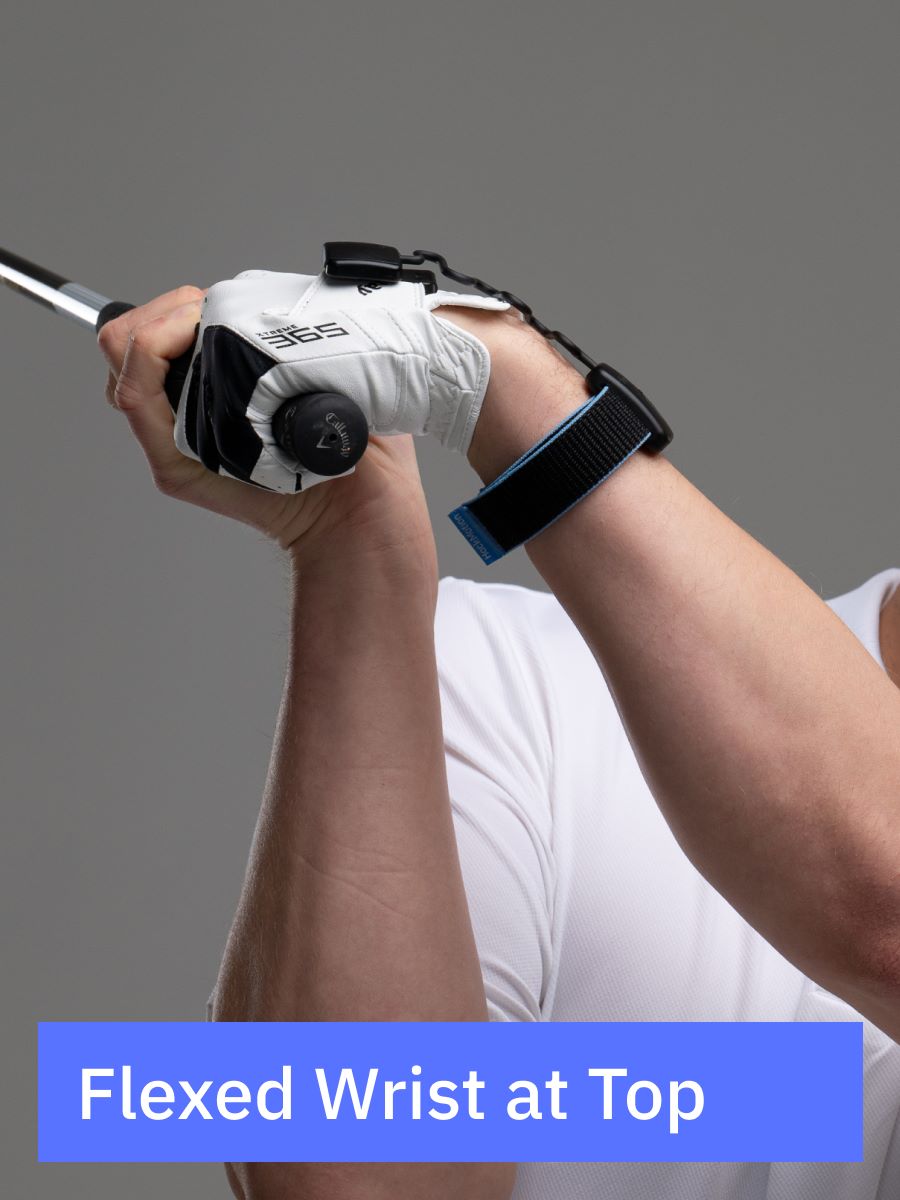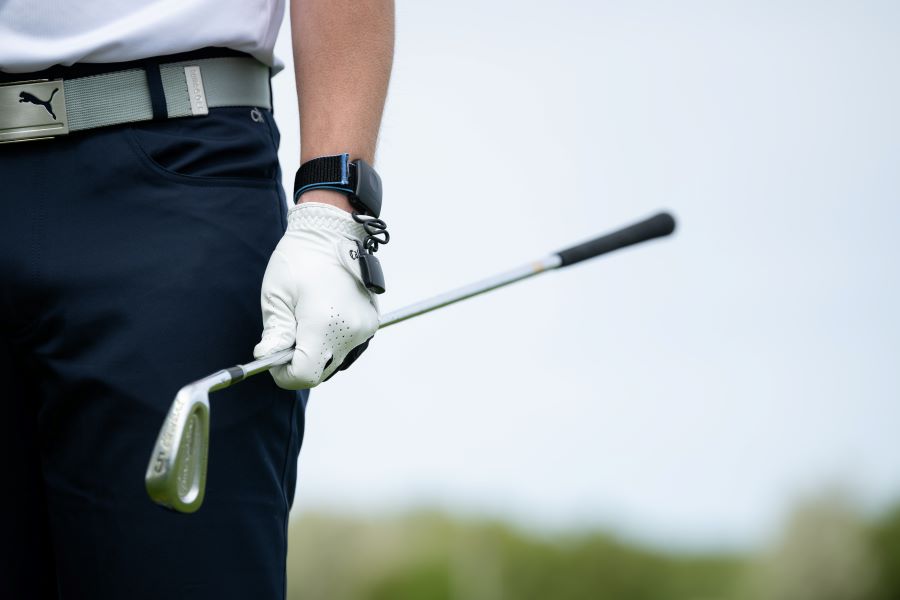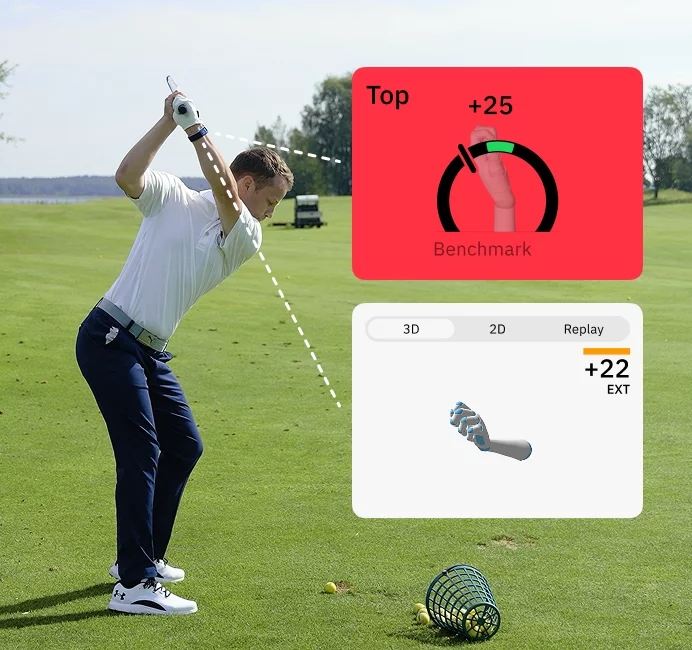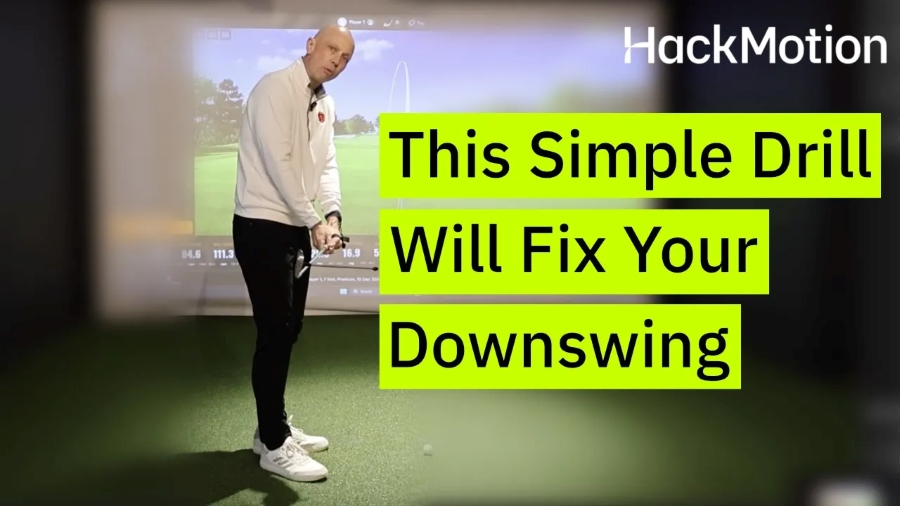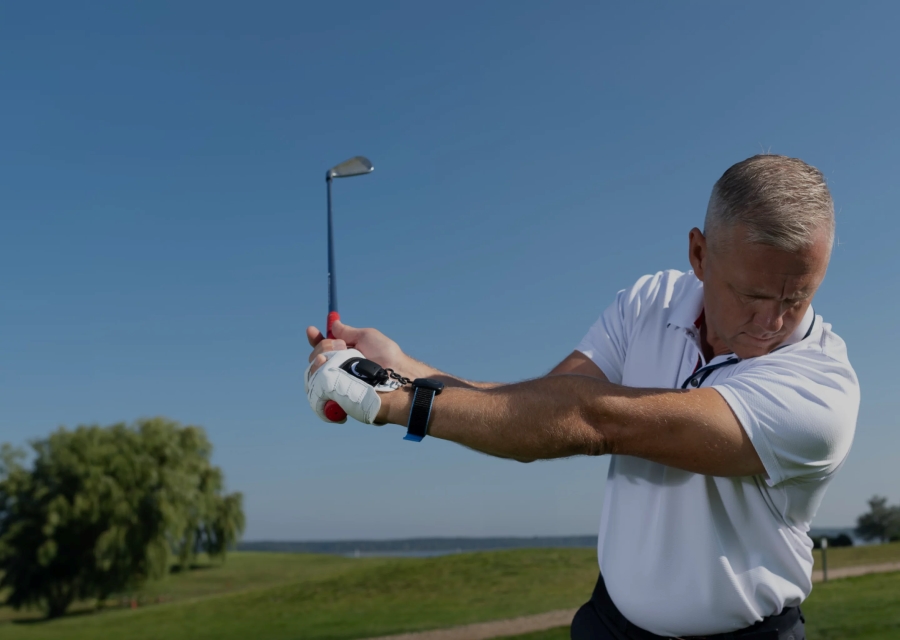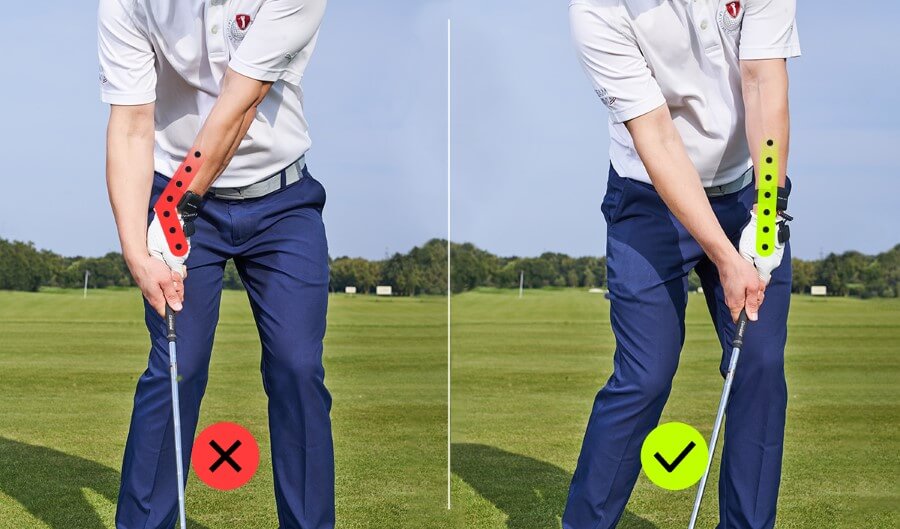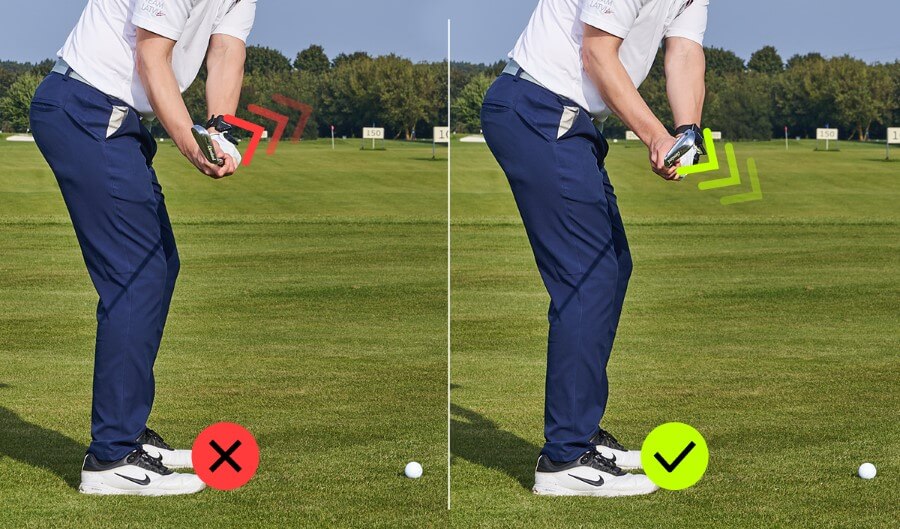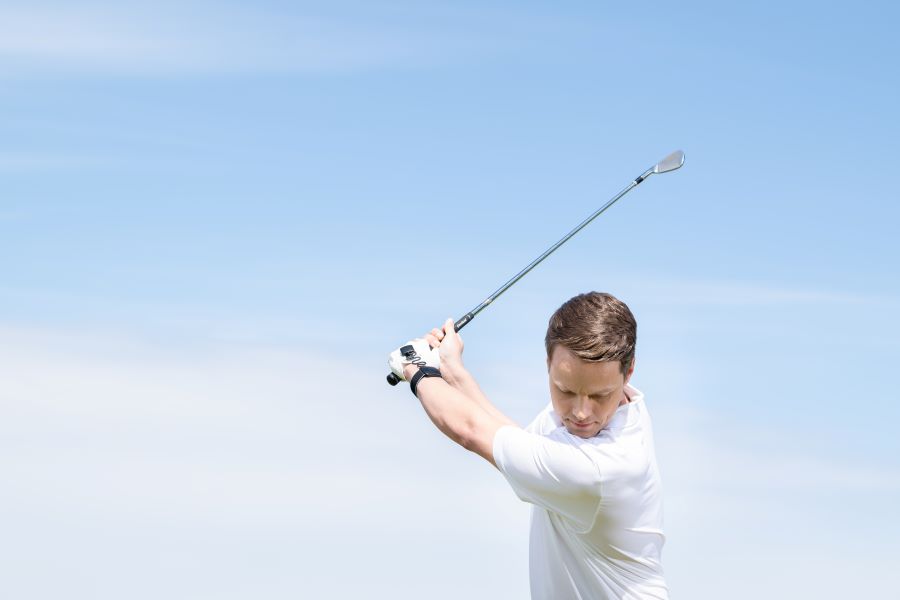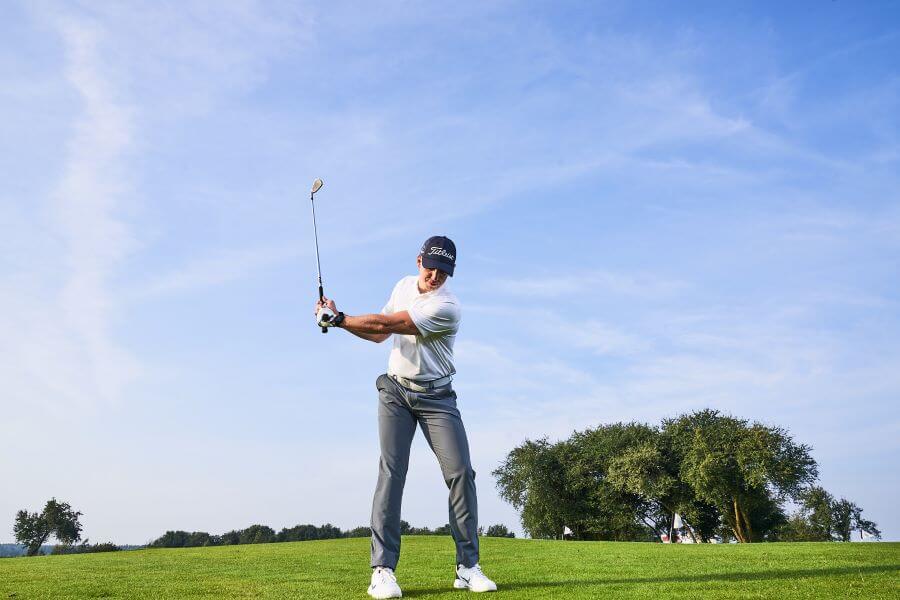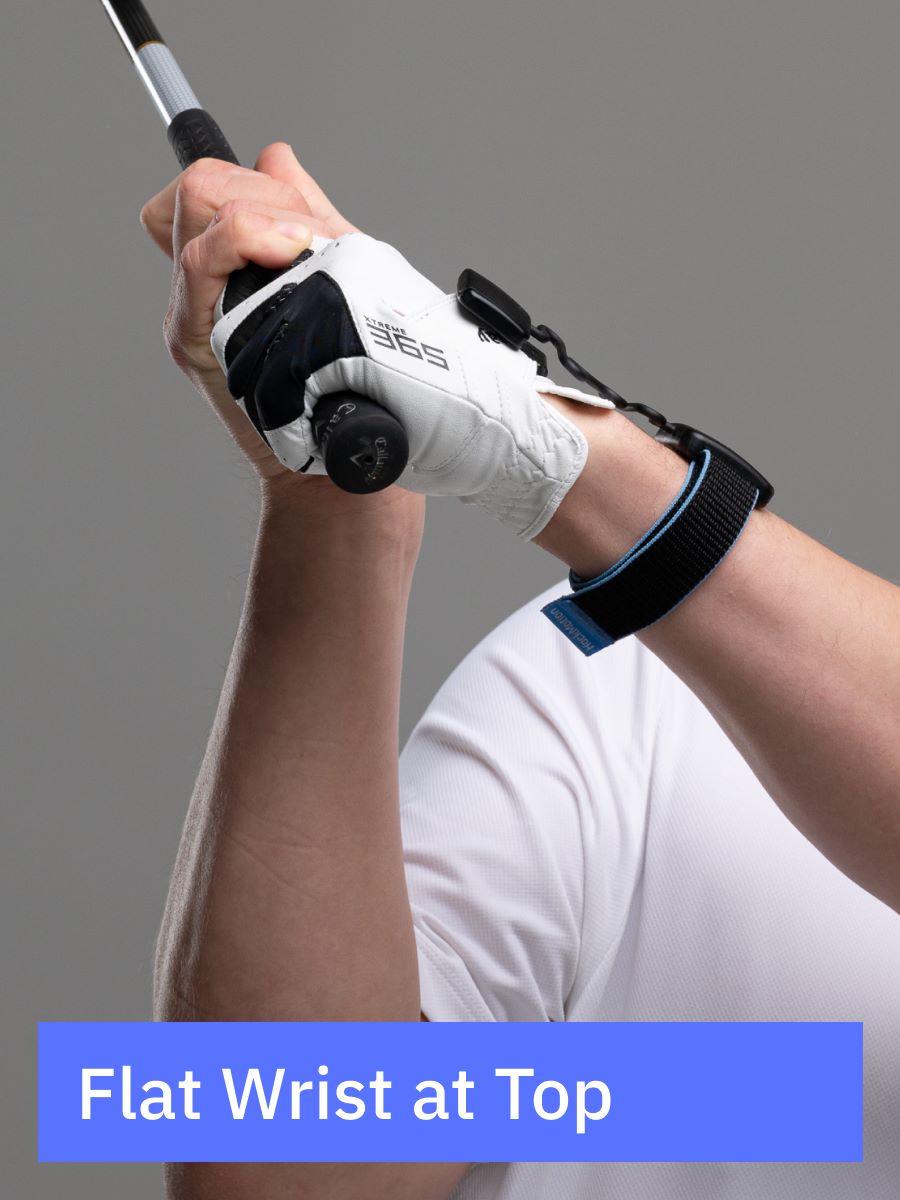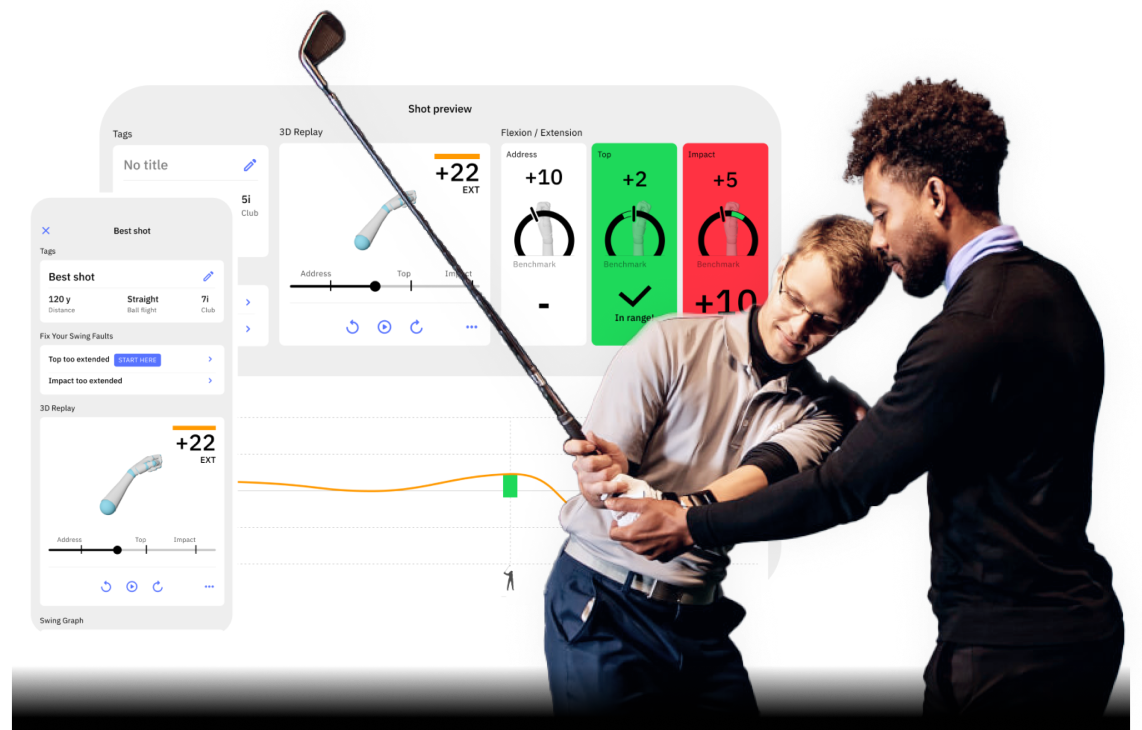Bowed Wrist in Golf (Could It Be the Swing Secret You Needed?)
A bowed wrist in golf means your lead wrist (left wrist for right-handed players) is flexed, not cupped, at the top of the backswing, and it’s becoming one of the most talked-about positions in the modern golf swing.
Some golfers say it’s the key to compressing the ball, hitting a powerful draw, and finally controlling the clubface.
So is it the secret you’ve been missing?
In this guide, we’ll break down exactly what a bowed wrist is, why it works for certain players, and how you can train it (or fix it) using simple drills and tools like HackMotion.
Bowed Left Wrist in Golf (Key Takeaways)
If you need to bookmark this article and come back later, here are the key takeaways you can take away right now:
- A bowed wrist means your lead wrist is flexed instead of extended; this changes how the clubface is delivered.
- More flexion (bowing) typically closes the clubface, which can help eliminate slices and promote a draw.
- Slight bowing at the top is often more reliable than a cupped wrist, especially if you’re struggling with open clubface issues.
- Grip adjustments, especially moving from a weak to a neutral grip, can help manage wrist angles.
- HackMotion lets you measure wrist flexion and extension in real time, giving you clear checkpoints and feedback as you practice.
If you prefer to watch instead of read, here’s a video recap explaining what a bowed wrist is, why it matters, its impact on golf shots, and how you can practice it to become a better player.
Contents
Wrists in the Golf Swing Explained
This is how the wrists move in the golf swing. Having a general idea will help you understand and control bowing during your backswing.
- Flexion / Extension: This is the bowing (flexion) or cupping (extension) of the lead wrist. Bowing closes the clubface, cupping opens it. This is the key movement that controls face angle.
- Radial / Ulnar Deviation: This is the hinging of the wrists up (radial) or down (ulnar). Radial adds power but can accidentally open the face if overdone. The ulnar helps shallow the club on the way down.
- Rotation (Pronation / Supination): This is the twisting of the wrist and forearm during the swing. Rotation helps match the clubface to your swing path and improves consistency through impact.
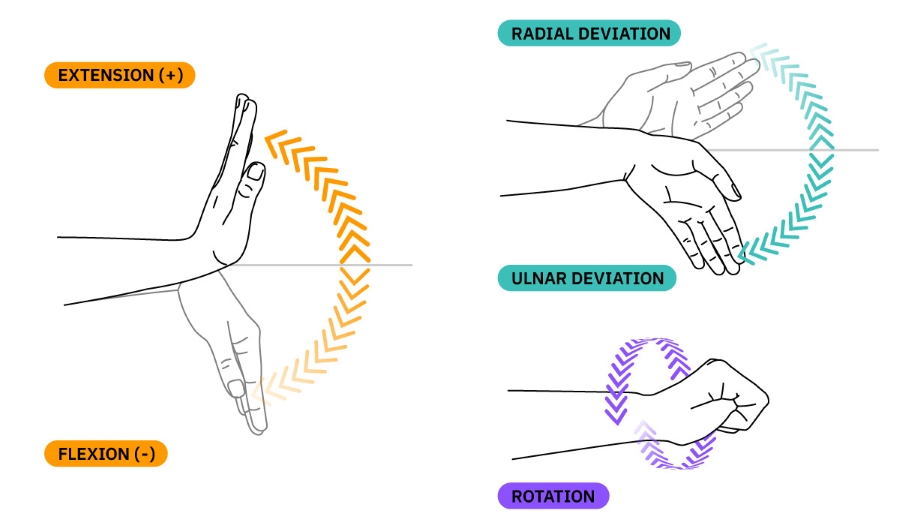
What’s the Proper Wrist Position?
Every golfer wants to know: What’s the ideal wrist position in the swing? The truth is, there’s no one perfect position.
However, after studying more than 1,000,000 golf swings, we did find patterns that lead to better results.
- A flat lead wrist (around 0–5° of flexion) is the most consistent and neutral position to hit from.
- A slightly bowed wrist (more flexed) can help close the clubface just enough to encourage a draw and improve compression.
- Too much extension (cupping) often leads to an open face and a slice, especially if it shows up at the top or in transition.
When we study better players, most of them reduce extension as they transition into the downswing.
This leads to a flat or slightly bowed wrist at impact, exactly the kind of position that leads to straighter, more powerful shots.
Should You Bow Your Lead Wrist in The Golf Swing?
As I’ve mentioned, most golfers find the bowed or flat wrist position to be the best overall spot to hit from.
The reason is that if you can achieve a bowed or flat position at the top, your chances of reaching impact with a square clubface are considerably higher. On the other hand, if your wrist is cupped, you have a lot of work to do to square things up.
The bowed wrist has been made largely popular by Dustin Johnson. His wrist is incredibly bowed at the top of his swing, and on the way down, he doesn’t have to do much to deliver the club in a square position; in fact, there are likely times he has to extend a bit to square things up.
Tiger Woods has always played with a flat left wrist.
Ben Hogan played with a more cupped wrist at times during his career, but he was able to add enough flex into his grip on the downswing to hit the ball with a square clubface.
If your wrist is slightly bowed in your swing and you hit the ball straight with good power, don’t change it. However, if you have severe bowing and are hitting big hooks, you may need adjustments to get back on track.
Tips and Drills to Fix Bowed Wrist in Backswing
A bowed wrist in golf isn’t something you need to fix—it’s something you need to understand.
When used correctly, a bowed lead wrist can square the face, add shaft lean, and provide you with a more consistent and powerful impact.
The real issue arises when players either overdo the bowing or fail to recognize how their grip, hinge, or movement patterns are affecting it.
Understand When Bowing Helps – and When It Hurts
A slightly bowed wrist, especially into impact, is a good thing. It closes the clubface just enough to promote a draw, and it provides the necessary structure to compress the ball and prevent flipping through impact.
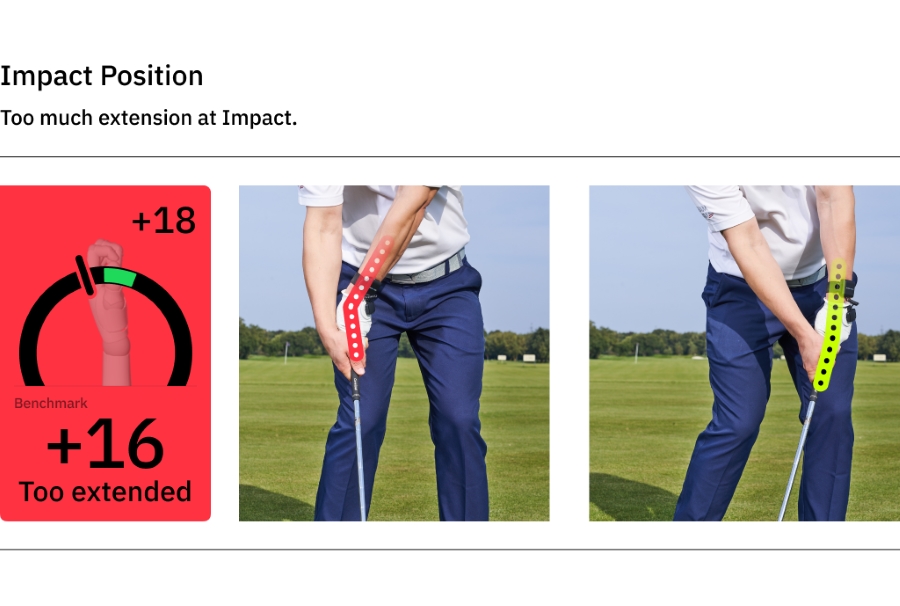
Problems arise when the wrist is too bowed, especially at the top of the swing. This often leads to low hooks, poor contact, or struggles with shot direction.
There’s no perfect number, but using HackMotion, we often see better players with 15–30° of flexion by P6 (club parallel to the ground).
That amount helps square the face without overdoing it. If you’re seeing more than that, especially early in the backswing, you may want to scale it back.
The Motorcycle Drill (Train Wrist Flexion Through Impact)
The Motorcycle Drill is one of the best ways to train proper wrist action, especially if you struggle with slicing or an open clubface at impact.
It teaches your lead wrist to flex (bow) early in the downswing, giving you a square face without last-second flipping.
Use HackMotion to work on this drill in real time. Most players are surprised to learn how extended they are at impact until they work on this drill.
Motorcycle Drill – Master Wrist Flexion in the Downswing
Focus on continuously adding flexion until the club reaches parallel, then smoothly complete your swing.
HackMotion Motorcycle Drill – Step by Step:
- Set up as usual.
- As you start the downswing, rotate your lead wrist like you’re revving a motorcycle.
- At P6, check that your lead wrist is flexed (bowed), not cupped.
- Maintain that flexion into impact, then allow a natural release.
- Start slow, then increase speed as you retain the correct feel.
Check Your Grip
One of the first things I look at when working with a golfer who’s over-bowed is the grip.
Golfers who bow their wrists too much often have a weak grip, where the left hand (for right-handed players) is rotated too far to the left.
This position can cause the club to be held aggressively and lead to the lead wrist bowing excessively during the backswing.
Try experimenting with a slightly stronger grip.
Rotating the left hand slightly more to the right.
Use it as a feel checkpoint. If your ball flight straightens out and the wrist feels more stable, you’re on the right track.
The Glove Logo Drill
This is a great way to check wrist position visually.
Put your glove on your left hand and take a normal, neutral grip. Swing to the top and take a peek at where the glove logo is pointing.
If it’s pointed upward toward the sky, you’re likely over-bowed. That’s not always a bad thing, but if you’re hitting hooks or struggling with low left shots, it’s a red flag. It’s best to see the logo pointed more outward or slightly down the target line. It’s not about locking it in place, but building awareness and feel.
Don’t Let Radial Hinge Sneak in Too Extension
One of the biggest mistakes I see, especially among players trying to lengthen their backswing, is over-hinging the wrists (radial deviation).
What most golfers don’t realize is that adding too much hinge often causes extension (cupping), which reopens the clubface without you even noticing.
This is why many players have a great-looking P2 checkpoint, but by the time they reach the top, the face is wide open. The fix isn’t to hinge more; it’s to swing with more width and less upward motion. Feel your arms and club rotate rather than hinge up.
When you do that, it becomes much easier to keep the lead wrist in flexion at the top.
Use HackMotion to see how much hinge and extension you’re adding at the top (P4). If extension creeps in, scale back the hinge and see how it impacts face control and contact.
FAQs
Here are a few of the most commonly asked questions about the bowed wrist in golf and the position that you should be in to hit more consistent golf shots.
Should you have a flat or bowed wrist at impact?
A flat to slightly bowed wrist at impact is the best position. Many professional golfers have a slight bow in their wrists, and this helps improve compression and turf interaction.
Should your wrist be flat or bowed at the top of the backswing?
At the top of the backswing, a flat wrist will create the most consistent position. However, golfers like Dustin Johnson have a bowed wrist at the top and can still strike the ball solidly.
What are Tour players with bowed wrists?
Tour players such as Gary Player and Dustin Johnson have been known to play with a bowed wrist. The wrist bowing helps golfers to get more distance, and it can increase the ability to hit a draw, and that’s why some golfers like to keep the wrist bowed.
What causes a bowed wrist?
Some golfers are set up with a grip that is too weak, and it causes a bowing of the wrist in the takeaway. Other players flex their wrists on the backswing, and it adds more of a bowed wrist position.
How do I stop bowing my wrist when golfing?
Bowing your wrist when you golf can be corrected using the HackMotion wrist sensor. HackMotion is worn on the lead wrist, and it tracks the position of the wrist throughout the swing.
Cupped or bowed left wrist?
The bowed left wrist is a better position to be in because it allows for better golf ball compression and increased distance. However, a flat wrist is something that most golfers should strive for.
A cupped wrist position at the top of the backswing can lead to a slice if it is not corrected on the downswing.
Final Thoughts
If you’re experimenting with a bowed wrist, you’re learning a move that many elite players rely on. A properly flexed lead wrist can help you square the clubface earlier, add shaft lean, and eliminate the need to flip at impact.
It’s one of the most effective ways to gain control over your ball flight, especially if you’ve struggled with slicing or inconsistent contact in the past.
The key is balance. Excessive bowing, especially when combined with grip or hinge issues, can result in hooks or low pulls.
That’s where HackMotion comes in, it lets you measure exactly how much flexion or extension you’re creating at key points in the swing.
Whether you’re learning to bow the wrist for the first time or trying to dial it in, HackMotion gives you instant feedback to train it the right way. Think of it as your coach on your wrist, helping you take control of the clubface and your game.
